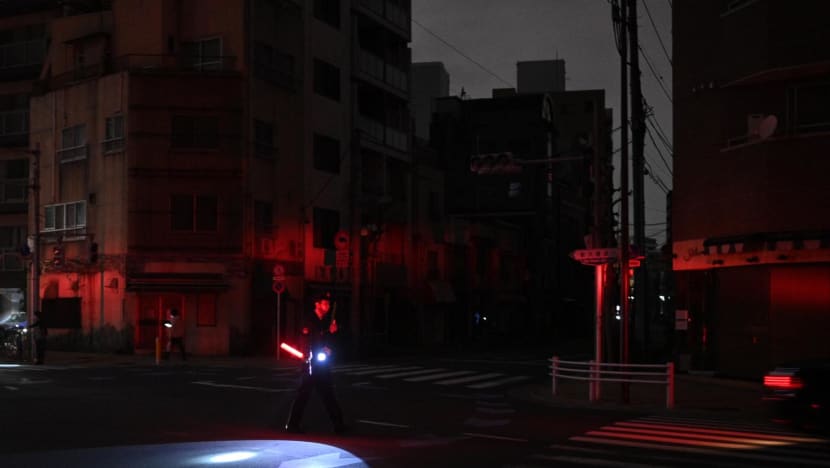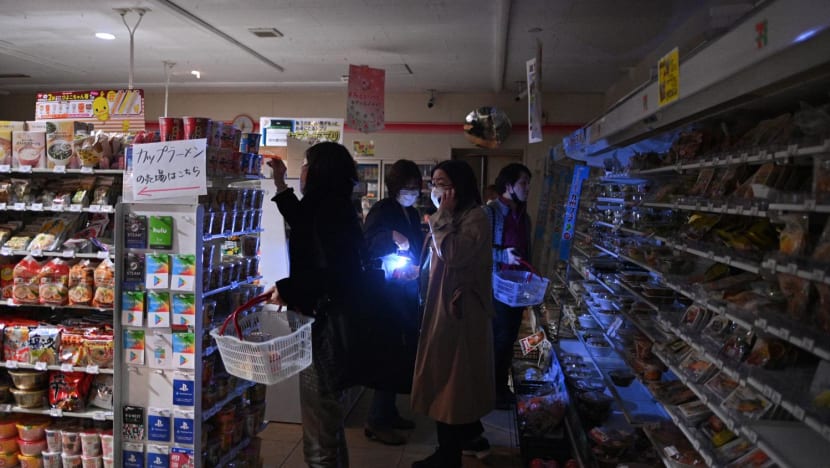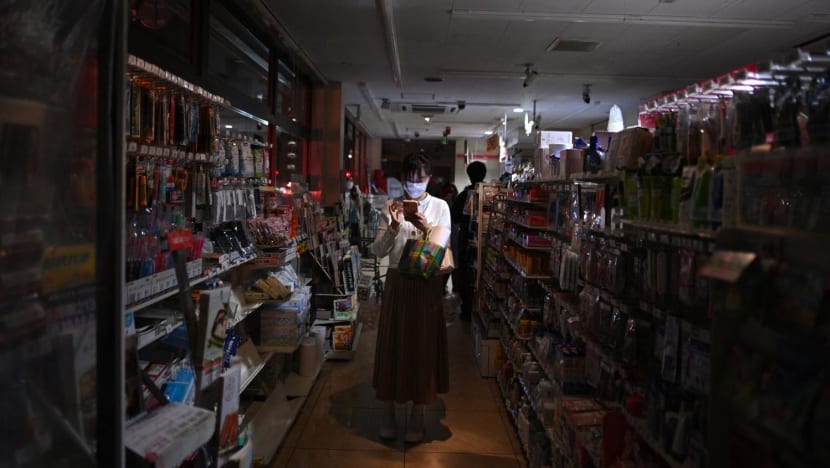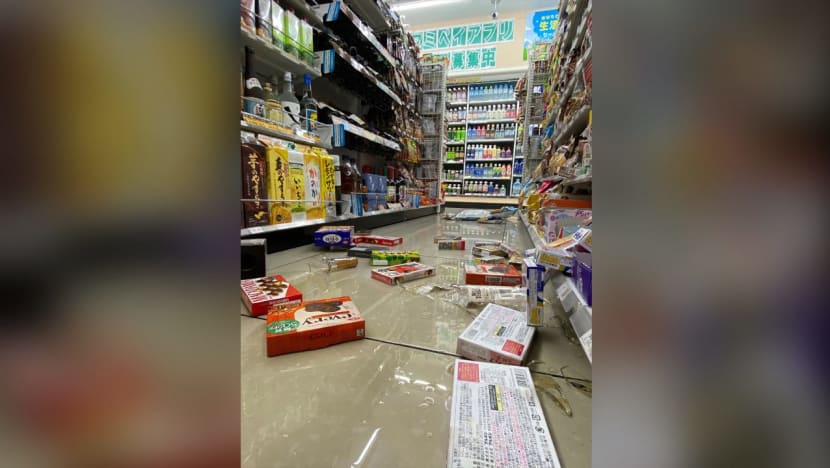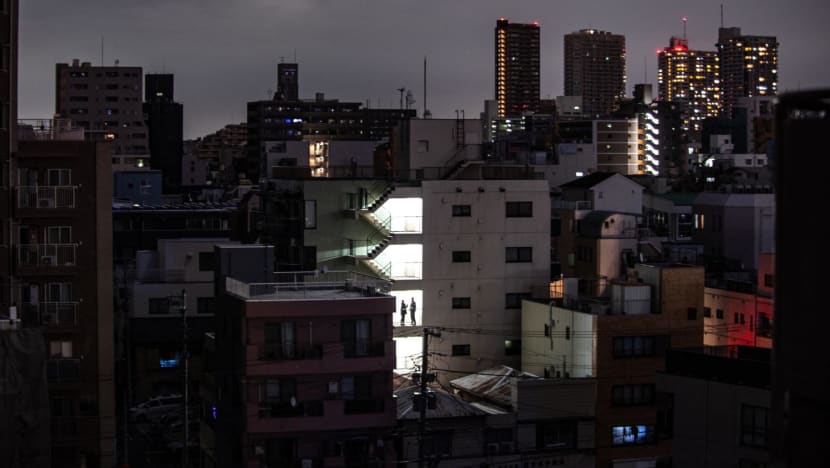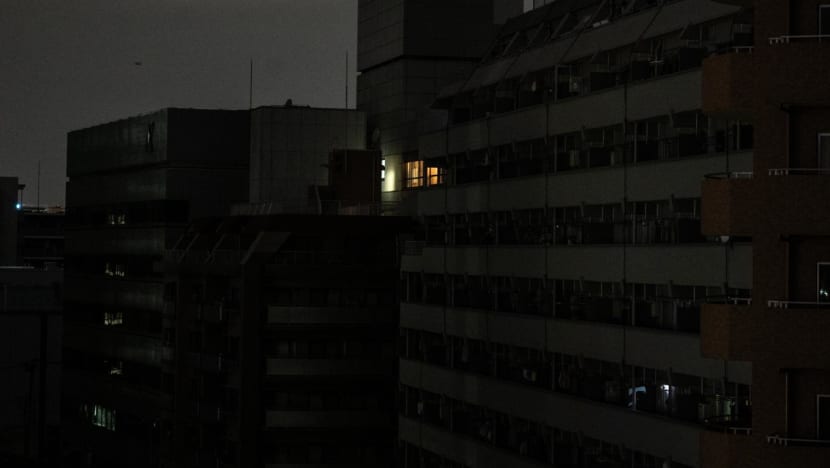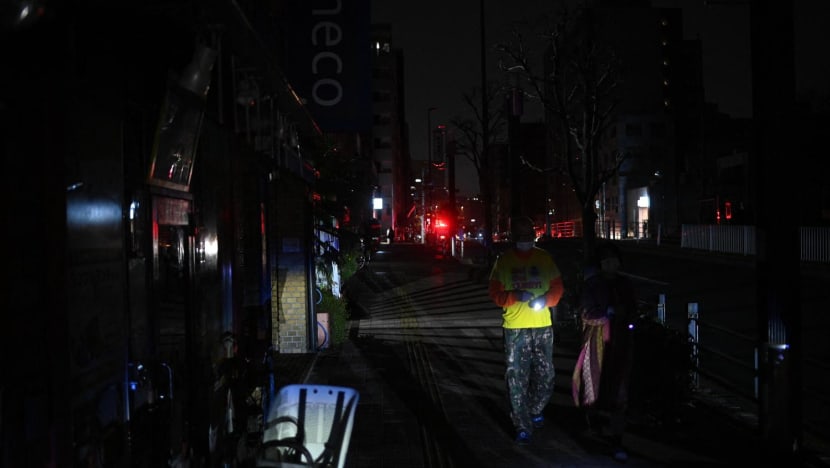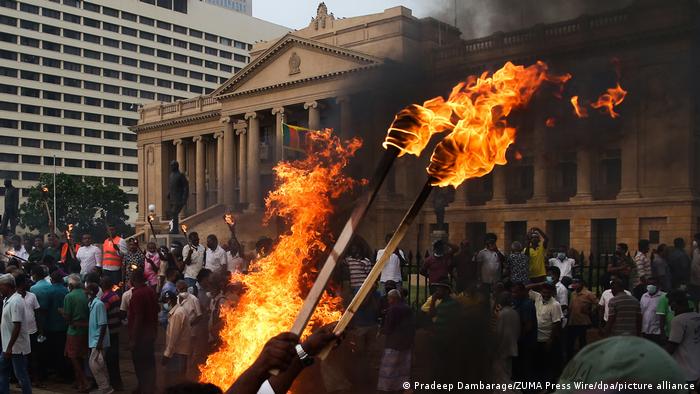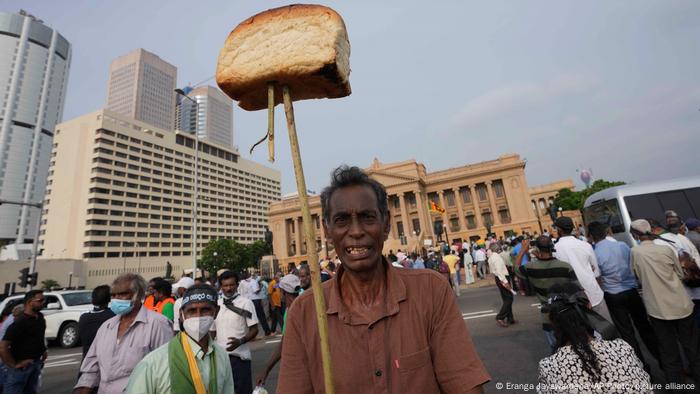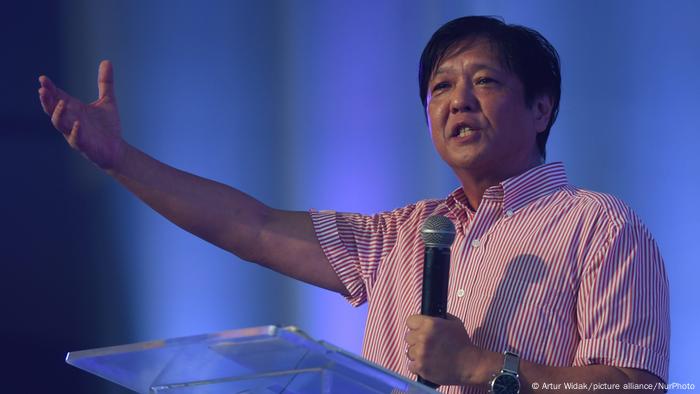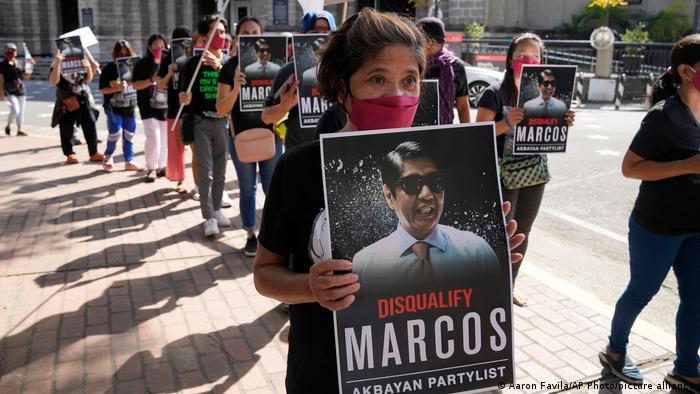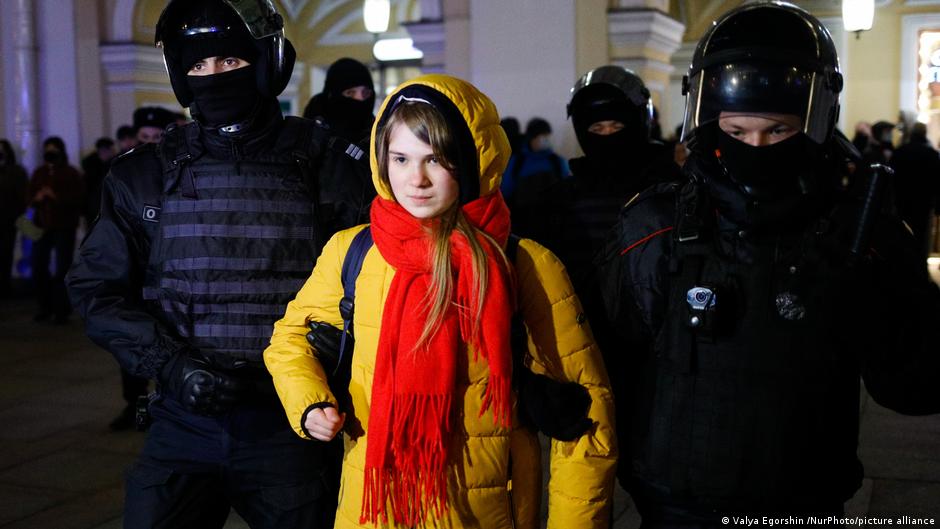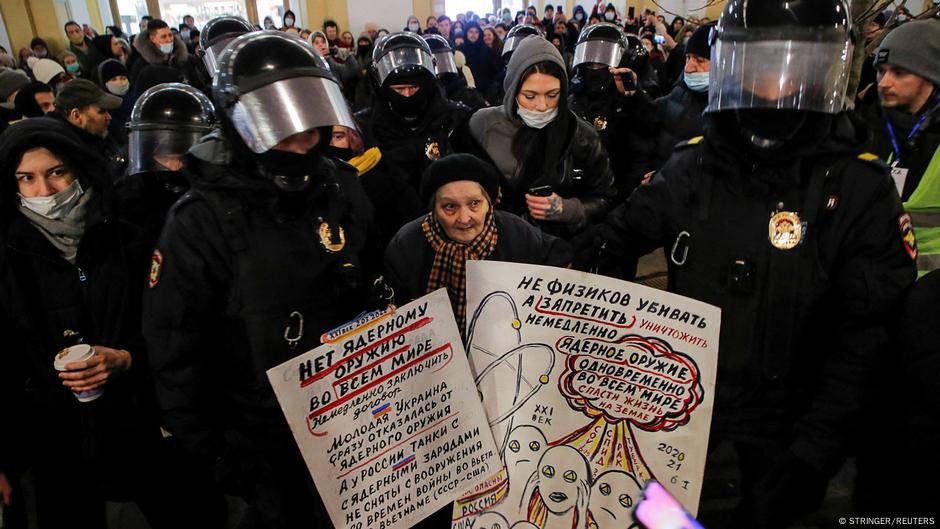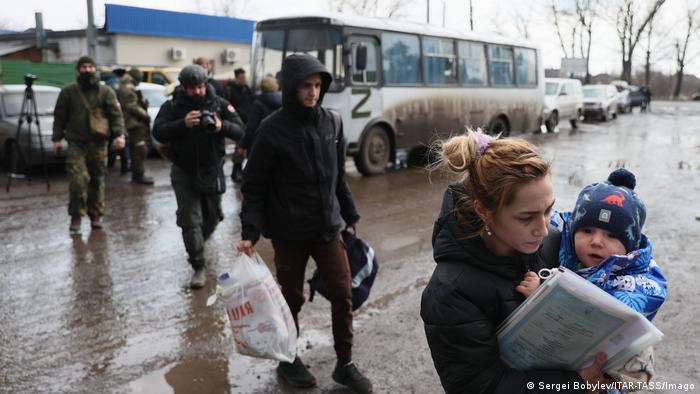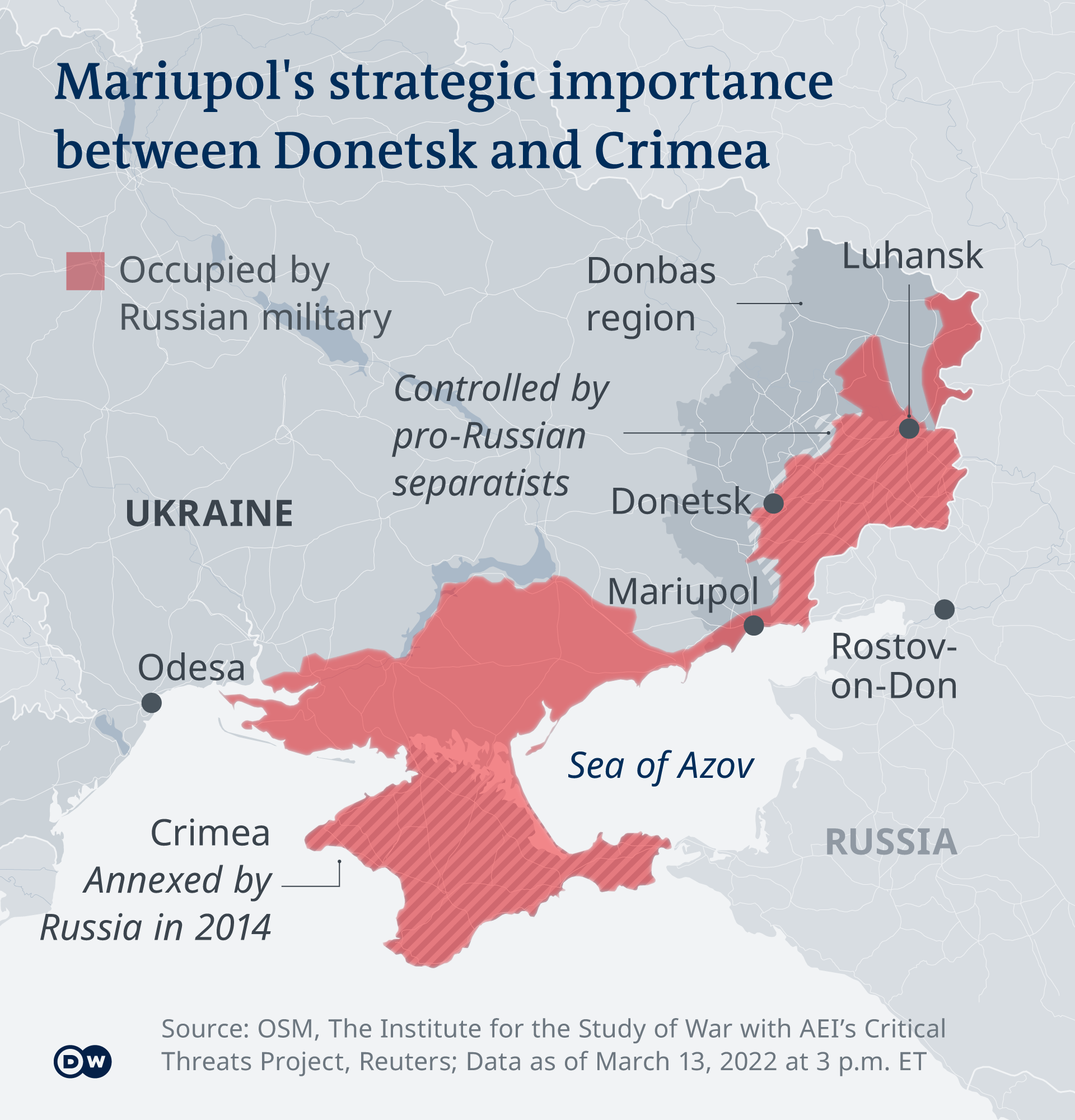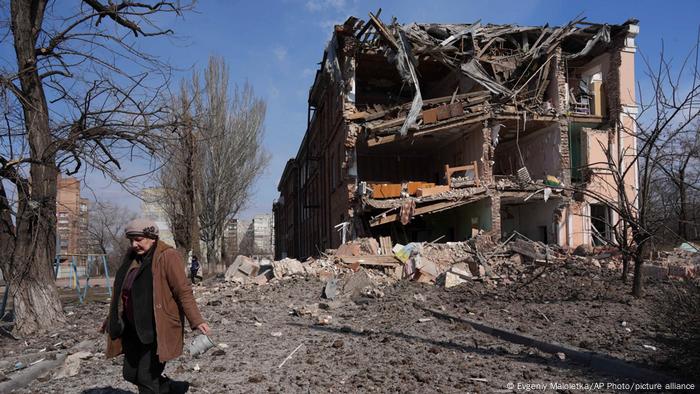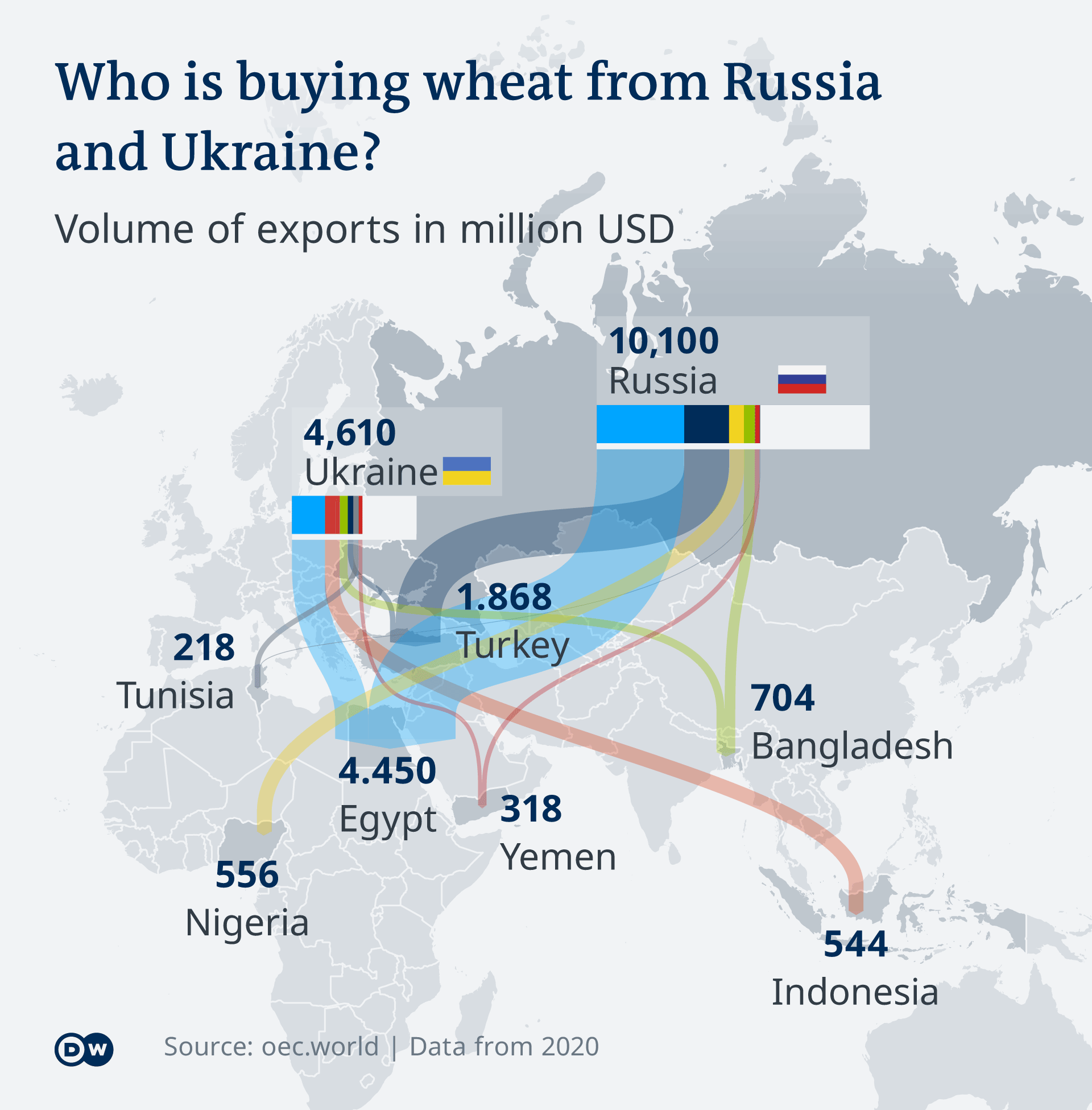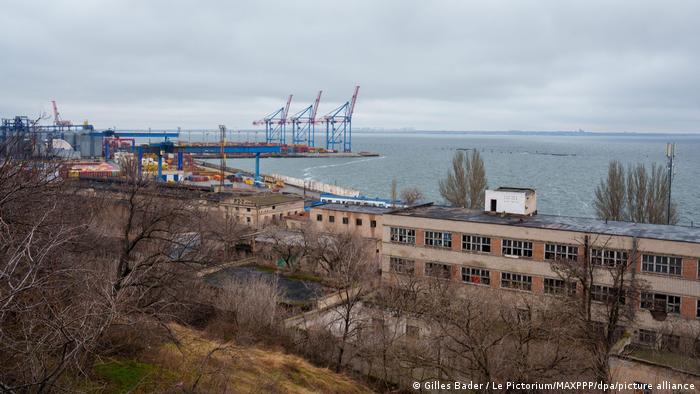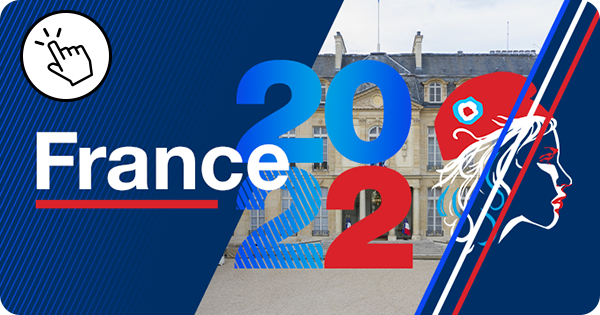2 dead after 7.3-magnitude earthquake hits Japan's northeast coast
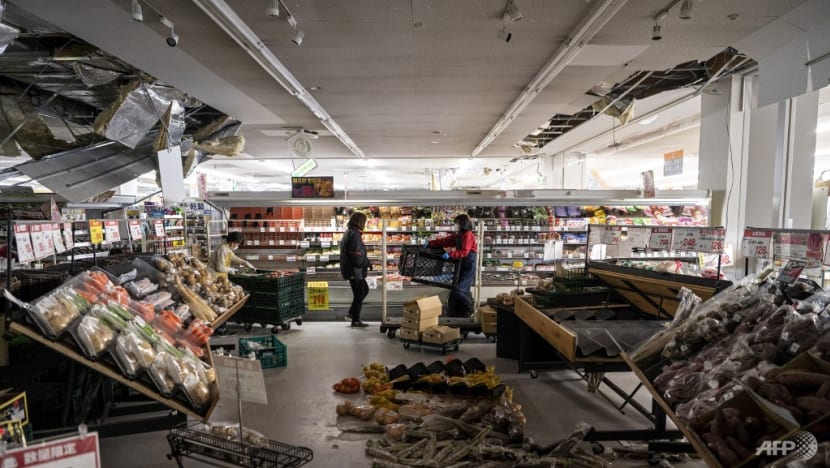
This picture shows scattered merchandise and damaged ceiling at a supermarket in Shiroishi, Miyagi prefecture on Mar 17, 2022 after a 7.3-magnitude earthquake jolted east Japan the night before. (Photo: AFP/Charly Triballeau)
16 Mar 2022 11:03PM(Updated: 17 Mar 2022 07:59AM)
TOKYO: A powerful magnitude 7.3 earthquake jolted Japan's northeast coast off Fukushima late on Wednesday (Mar 16), leaving two dead and 94 injured and reviving memories of a quake and tsunami that crippled the same region just over a decade earlier.
There were some reports of fire, the government said. The Fire and Disaster Management Agency said on Thursday morning that there had been two confirmed deaths and 94 injured, including four seriously.
The quake was felt in Tokyo, about 275km away, where the shaking of buildings was long and pronounced. Hundreds of thousands of homes in the capital were plunged into darkness for an hour or more, although power was fully restored by the early hours of Thursday morning.
Authorities cancelled an earlier tsunami warning.
Just before midnight, the quake hit off the coast of Fukushima prefecture at a depth of 60 kilometres, the Japan Meteorological Agency said. It sparked memories of a devastating earthquake and tsunami in March 2011, a week after that disaster's 11th anniversary.
There were no abnormalities at nuclear power plants, Prime Minister Fumio Kishida told reporters. The 2011 disaster triggered a meltdown at the Daiichi nuclear plant in Fukushima, an incident Japan is still coming to grips with.
Authorities earlier said a fire alarm had been triggered at a turbine building at the crippled plant.
Separately, a Shinkansen bullet train derailed with about 100 people on board, although there were no reports of injuries.
Utility Tokyo Electric Power Company said that initially about 2 million households lost power on Wednesday, including 700,000 in the capital. Tohoku Electric Power said about 38,500 homes were still without power as of 7.40am local time on Thursday.
Strong quakes in Japan can disrupt manufacturing, particularly of sensitive electronic components such as semiconductors that are made using precision machinery.
The 2011 quake halted production for three months at a factory owned by Renesas Electronics, which makes nearly a third of all microcontroller chips used in cars. A fire at the facility last year exacerbated a chip shortage that has forced auto companies to curb output.
Renesas said it was checking the condition of three of its plants - Naka, Yonezawa and Takasaki - and would provide a statement on whether production has been affected later.
Sitting on the boundary of several tectonic plates, Japan experiences around a fifth of the world's earthquakes of magnitude 6 or greater.
CNA correspondent in Japan, Michiyo Ishida, said in a tweet that a big earthquake had hit the Tohoku area.
"Tokyo shakes too. It’s two separate tremors. The bigger one measured an M7.3 at past 11.30pm," she wrote.
There were also blackouts due to the earthquake, she added.
